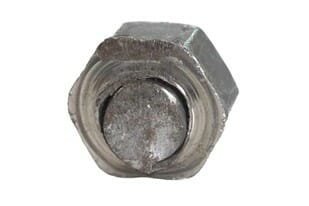What is galling?
Galling refers to a type of adhesive wear that occurs when two surfaces slide along one another. Galling most typically occurs in metal-on-metal contact, however this type of wear can occur on any surface contact with sliding motion.
The relative motion between the surfaces creates friction and shear stress that results in pieces from the microscopic structure of the surfaces to break off.
Galling can result in increased friction, accelerated wear, and even seizing or catastrophic failure of the components involved.
Preventing and mitigating galling is crucial in many applications to ensure optimal performance, longevity, and reliability of mechanical systems.
Dicronite® Coating
The implications of galling
- INCREASED FRICTION AND WEAR - This increased friction can accelerate wear and damage the surfaces involved. It can cause surface roughening, loss of material, and the generation of debris or particles that further exacerbate the wear process.
- SIEZING AND FAILURES - As galling progresses, the adhesion between the surfaces can become so severe that the components may seize or stick together completely. This can result in catastrophic failures, especially in critical machinery or equipment.
- COMPROMISED PERFORMANCE AND EFFICIENCY - The increased friction and wear can lead to decreased functionality, reduced operating speeds, and compromised energy efficiency. It can also cause fluctuations in system performance, resulting in inconsistent or unreliable operation.
- MAINTENANCE AND REPAIR COSTS - Repairing or replacing damaged components, conducting inspections and tests, and implementing preventive measures can all contribute to increased expenses. Additionally, unexpected failures and downtime can result in productivity losses and additional financial burdens.
- SAFETY RISKS - In certain applications, galling can pose safety risks. Seized or failed components can compromise the integrity of equipment, leading to accidents or injuries. For example, galling-related failures in critical machinery or structural components can result in sudden collapses or malfunctions that jeopardize the safety of operators and nearby personnel.
Industries Served
To prevent galling:
- REDUCE INSTALLATION SPEED – slowing installation speed can reduce the likelihood of galling.
- STOP WHEN YOU FEEL RESISTANCE – if you are installing a bolt or a screw be sure to avoid further tightening it when it comes to a halt. There may still be a chance to remove it before it completely seizes.
- USE DIFFERENT GRADES OF METALS – using two different grades of metals for sliding components will help further prevent breakdown of materials due to differing hardness ratings. This makes it harder for both materials to break down one another and fuse together.
- CHECK FOR DAMAGE PRIOR – checking for damaged threads or materials prior to use will help avoid galling.
- LUBRICATE – lubrication is one of the very best ways to prevent galling because it helps reduce friction and ensure components are sliding efficiently.
Importance of an anti-galling coating
Lubrication plays a critical role in preventing galling in applications. By reducing friction, lubrication helps minimize adhesion and the risk of galling.
Proper lubrication practices are essential in maintaining optimal performance, extending component life, and mitigating the negative consequences of galling.

What to use as an anti-galling coating?
Several types of lubricants can be used to prevent galling in various applications. However, the choice of lubricant depends on factors such as application requirements, operating conditions, material compatibility, and load levels.
It is important to select the appropriate lubricant based on these considerations to effectively prevent galling and ensure optimal performance of the components.
How Dicronite® can help:
Dicronite® is a dry film lubricant (tungsten disulfide) that has been used as an anti-galling coating in various industries and high precision applications.
- The coating works to prevent galling on all types of threads.
- Dicronite® can be applied to all metals. It is a great solution for preventing galling in troublesome materials such as stainless steel, aluminum, and titanium.
- The parts can be masked so only the area the customer specifies receives the coating.
- This thin lubricating film is ideal for systems requiring tight tolerances with its half micron thickness.
- The coating won’t attract dirt or debris like typical anti-seize compounds

Anti-galling coating for 65+ years.
Dicronite® is a dry film lubrication made up of tungsten disulfide.
It can be applied to all metals, most plastics and some ceramics; may be applied on other coatings and platings as well.
COATING THICKNESS – 0.5 micron (0.00002 inch) or less
THERMAL STABILITY – up to 538°C in air; 1316°C in vacuum
COMPATIBILITY – compatible with greases, oils, fuels, fluids, and many solvents.
Dicronite® is applied at one of many worldwide licensed coating facilities.
After surface preparation, Dicronite® is impinged onto the surface at high velocity.
The material includes no binders or adhesives and requires no curing.
All you have to do is:
- Tell us about your application
- Send components to one of our application facilities
- Receive your expertly coated parts with little lead time.
Dicronite® has various application facilities that can provide the following quality certifications:
NADCAP
ITAR
ISO9001
AS9100
Submit an official quote today.
Join countless engineers who use Dicronite® to prevent galling.
Request a quote and lead time.
Not quite ready for a quote?
Ask a Question
Request a Trial